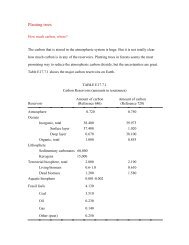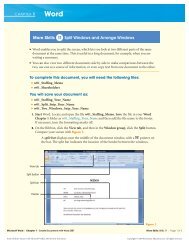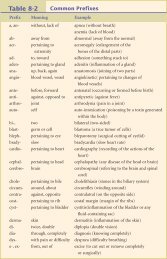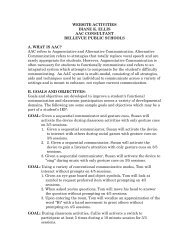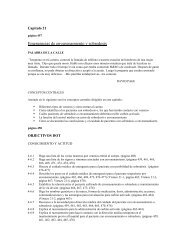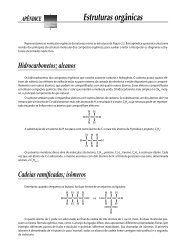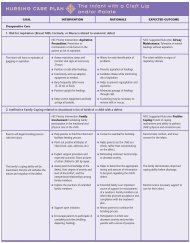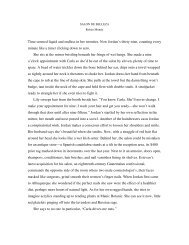chapter
chapter
chapter
You also want an ePaper? Increase the reach of your titles
YUMPU automatically turns print PDFs into web optimized ePapers that Google loves.
202 Unit Three Forces Within<br />
of such a continental collision is a majestic mountain<br />
range such as the Himalayas.<br />
In the following sections we will briefly summarize<br />
the nature of the three types of plate boundaries.<br />
Divergent Plate Boundaries<br />
EEA R T H S C I E N C E<br />
Forces Within<br />
Plate Tectonics<br />
Most divergent ( di = apart,<br />
vergere = to move)<br />
plate<br />
boundaries are located along the crests of oceanic ridges<br />
and can be thought of as constructive plate margins since<br />
this is where new oceanic lithosphere is generated (Figure<br />
7.9). Here, as the plates move away from the ridge<br />
axis, the fractures created are filled with molten rock<br />
that wells up from the hot mantle below. Gradually,<br />
this magma cools to produce new silvers of seafloor. In<br />
a continuous manner, spreading and upwelling of<br />
magma adds oceanic lithosphere between the diverging<br />
plates. As we shall see later, divergent boundaries<br />
can also form on the continents (Figure 7.10).<br />
North<br />
America<br />
Lithosphere<br />
Asthenosphere<br />
Mid-Atlantic Ridge<br />
Magma<br />
chamber<br />
Figure 7.9 Most divergent plate boundaries are situated along the crests of oceanic ridges.<br />
Oceanic Ridges<br />
and Seafloor Spreading<br />
Along well-developed divergent plate boundaries, the<br />
seafloor is elevated forming the oceanic ridge. The interconnected<br />
ocean ridge system is the longest topographic<br />
feature on Earth’s surface, exceeding 70,000<br />
kilometers (43,000 miles) in length with crests commonly<br />
2 to 3 kilometers higher than the adjacent ocean<br />
basins. Representing 20 percent of Earth’s surface, the<br />
ocean ridge system winds through all major ocean<br />
basins in a manner similar to the seam on a baseball.<br />
The term “ridge” may be misleading, as these features<br />
are not narrow but have widths from 1000 to 4000 kilometers.<br />
Further, along the axis of some segments are<br />
deep down-faulted structures called rift valleys.<br />
The mechanism that operates along the oceanic ridge<br />
system to create new seafloor is appropriately called<br />
seafloor spreading. Typical rates of spreading average<br />
around 5 centimeters (2 inches) per year. Comparatively<br />
slow spreading rates of 2 centimeters per year are found<br />
in the North Atlantic, whereas spreading rates exceeding<br />
15 centimeters (6 inches) have been measured along<br />
Rift<br />
valleys<br />
Europe<br />
Africa<br />
Lithosphere<br />
Asthenosphere




